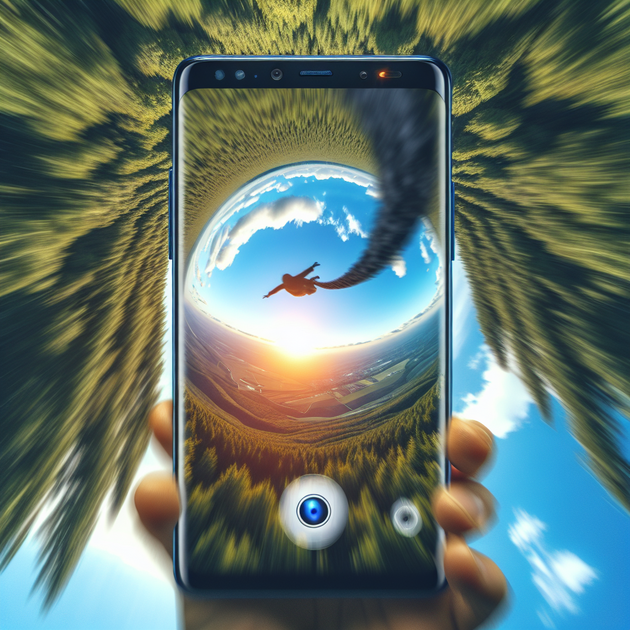## Could Your Phone Survive a 150 MPH Fall?
Ever wondered what would happen if your phone took a nosedive from hundreds of feet in the air—say, during skydiving or out of a plane window? Well, one unlucky (or maybe lucky) device did just that. A recent viral post on Reddit by /u/barrymj26 shows what happens when a **phone fell at 150 mph**… and records footage that almost seems to bend reality itself.
Let’s break down how this jaw-dropping moment went down—and why the resulting video has everyone scratching their heads.
—
## The Viral Moment: When Physics Meets Smartphones
The story starts with an everyday smartphone in an anything-but-everyday situation. According to the original Reddit post ([link here](https://www.reddit.com/r/interestingasfuck/comments/1mwt483/this_phone_fell_at_150_mph_and_recorded_footage/)), the device was dropped mid-air and began plummeting toward earth at roughly **150 miles per hour**.
Now, phones aren’t exactly designed for speed—especially not terminal velocity kind of speed. But as it tumbled and spun towards the ground, its camera kept rolling. The end result? Video footage where trees seem to bend and warp like something out of Inception or The Matrix.
So what makes this video look so surreal? It comes down to:
– **Extreme motion blur** – The phone spins so fast that normal objects stretch into streaks.
– **Rolling shutter effect** – Most phones scan images line-by-line; fast movement distorts straight lines into wavy shapes.
– **Light distortion** – Quick changes in angle shift light sources dramatically.
– **Sheer speed** – At 150 mph, even everyday scenery gets transformed into abstract art.
—
## How Did the Phone Survive—and Keep Recording?
Most of us have dropped our phones before (hello spider-web screens!), but few can say their device survived a skydive-worthy tumble. So how did this one manage?
A few possible reasons:
– **Case + screen protector** – Shock absorption makes all the difference.
– **Landing spot** – Grass or soft soil can cushion impact better than concrete.
– **Battery placement** – Phones with centrally-located batteries may distribute shock more evenly.
– **Luck!** – Let’s be honest—a lot comes down to chance.
What’s fascinating is not just that it survived (though that’s impressive), but that it managed to keep recording through all those g-forces. It’s like an impromptu smartphone durability test *and* high-speed camera demo rolled into one.
—
## Why Does Fast-Moving Video Look So Weird?
If you’ve ever seen those trippy slow-mo videos where propellers look rubbery or wheels appear to spin backward, you’ve witnessed something called “rolling shutter.” That same phenomenon turns a simple fall into mind-bending art when a phone fell at 150 mph.
Here’s what’s happening under the hood:
– **Rolling shutter:** Most smartphones don’t capture an image all at once—they scan from top to bottom (or side to side). If your camera moves super quickly (like during a freefall), objects appear warped or bent.
– **Motion blur:** Fast motion means each pixel captures more movement in less time—leading to smeared visuals.
– **Sensor lag:** The time between frames lets rapid movement distort everything.
This combo can make straight tree trunks look like melting spaghetti—and turn boring grass fields into swirling green tornadoes.
—
## A Real-Life Anecdote
I once dropped my own phone (thankfully not from an airplane!) while biking downhill pretty fast. It skidded along the pavement for several meters before coming to rest—camera still running. When I checked later, the video looked totally warped for a split second—the world seemed stretchy and unreal as my phone tumbled head-over-heels.
It was nothing compared to what happens when a **phone fell at 150 mph**, but even small drops can show off these weird camera effects if you look closely!
—
## Would You Trust Your Phone With Gravity?
Seeing a smartphone survive such an insane fall—and capture bizarre “reality-bending” video—makes you wonder about both physics and modern tech design. Sure, most of us will never need our phones to endure terminal velocity…but it’s cool to know they might just surprise us if they ever do!
What do you think—would your own device stand up to such an extreme test? Or would gravity win every time? Share your thoughts below!
—

Leave a Reply